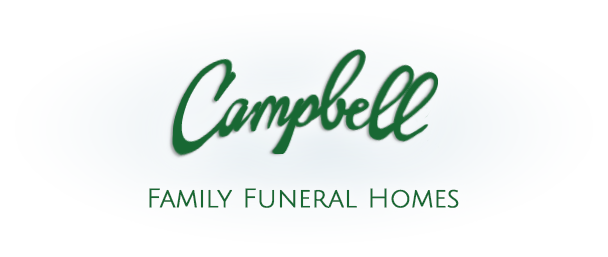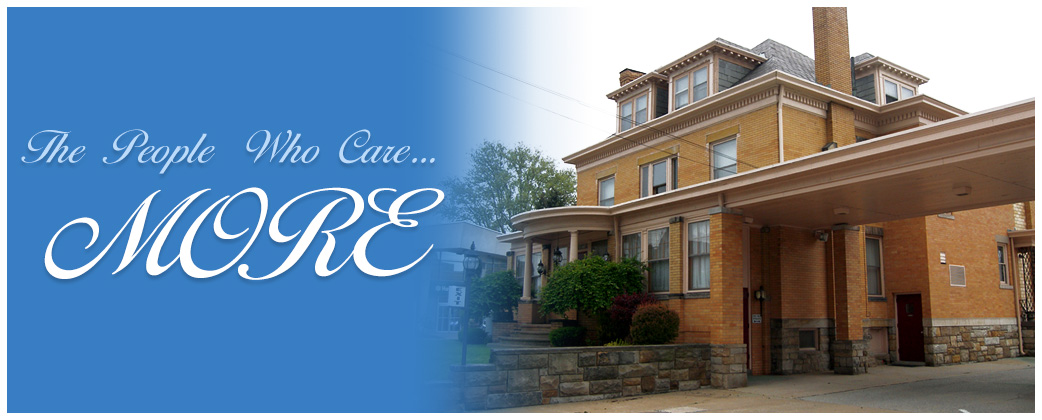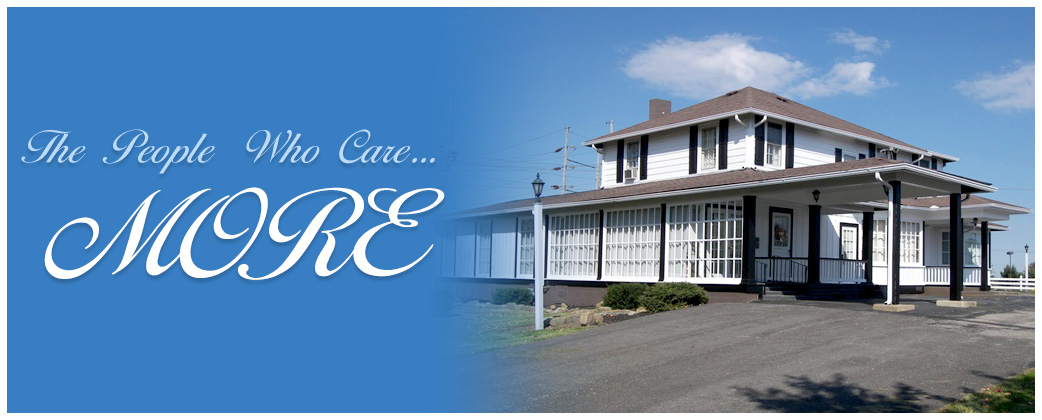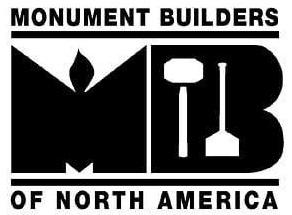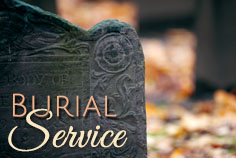
Burial Services provided by Campbell Funeral Homes
Traditionally, a burial service included a visitation, followed by a funeral service in a church, or funeral home. You have the option of having you loved one interred (earth burial), or be entombed in a crypt inside a mausoleum (above ground burial). Family or religious traditions are often an important factor when making these decisions. Some of the decisions needed to be made include what casket to use, what cemetery to use and what to be engraved on the monument.
Cemetery Types
Traditional Cemetery: A traditional style cemetery is where headstones or other monuments made of granite rise vertically above the ground. There are countless different types of designs for headstones, ranging from very simple to large and complex.
Memorial Park Cemetery: A memorial park cemetery is where each grave is marked with a commemorative marker that is placed horizontally at the head of the grave at ground-level. They are made of bronze or granite.
Mausoleum: A mausoleum is an external free-standing building constructed as a monument enclosing the interment space or burial chamber of a deceased person(s). A mausoleum may be considered a type of tomb or the tomb may be considered to be within the mausoleum. The most famous mausoleum is the Taj Mahal in India.
Columbarium: Columbarium walls are reserved for cremated remains. While cremated remains can be kept at home by families or scattered somewhere significant to the deceased, a columbarium provides friends and family a place to mourn and visit.
Natural Cemeteries: Natural cemeteries, also known as eco-cemeteries or green burial cemeteries, is a relatively new style of cemetery. Natural burials are motivated by the desire to be environmentally conscience. Although natural burials can be performed at any type of cemetery not all cemeteries are set up for this practice. They are usually done in a natural woodland area. Conventional markings such as headstones are generally replaced with a tree or a bush or a placement of a natural rock.
Frequently Asked Questions about Burial
What is the opening and closing of the grave?
Typically, the opening and closing fee includes administration and permanent record keeping (determining ownership, obtaining permission and the completion of other documentation which may be required, entering the interment particulars in the interment register, maintaining all legal files); opening and closing the grave (locating the grave and laying out the boundaries, excavating and filling the interment space); installation and removal of the lowering device; placement and removal of artificial grass dressing and matting at the grave site, leveling, tamping, re-grading and sodding the grave site and leveling and re-sodding the grave when the earth settles.
Can we dig our own grave to avoid the charge for opening and closing?
The actual opening and closing of the grave is just one component of the opening and closing fee. Due to safety issues which arise around the use of machinery on cemetery property and the protection of other gravesites, the actual opening and closing of the grave is conducted by cemetery grounds personnel only.
Why is having a place to visit so important?
To remember and to be remembered are natural human needs. A permanent memorial in a cemetery provides a focal point for remembrance and memorializing the deceased. Throughout human history, memorialization of the dead has been a key component of almost every culture. Psychologists say that remembrance practices from the funeral or memorial service to permanent memorialization, serve an important emotional function for survivors by helping them bring closure and assisting in the healing process. Providing a permanent resting place for the deceased is a dignified treatment for a loved one’s mortal remains, which fulfills the natural human desire for memorialization.
What happens when a cemetery runs out of land?
When a cemetery runs out of land, it will continue to operate and serve the community. There are some historic cemeteries that even offer guided tours.
In a hundred years will this cemetery still be there?
We think of cemetery lands as being in perpetuity. There are cemeteries throughout the world that have been in existence for hundreds and hundreds of years.
How soon after or how long after a death must an individual be buried?
There is no law that states a specific time frame for burial. Considerations that will affect timelines include the need to secure all permits and authorizations, notification of family and friends, preparation of the cemetery site and religious considerations.
Does a body have to be embalmed before it is buried?
No. However there are some cemeteries with mausoleums that require embalming before the entombment. Embalming is a choice which depends on factors such as if there is to be an open casket or if there is an extended time between death and burial. Public health laws may require embalming if the deceased is going to be transported by air or rail.
What options are available besides ground burial?
Besides ground burial, some cemeteries offer entombment in mausoleums. In addition, most cemeteries provide choices for those who have selected cremation. These often include placement of cremated remains in a niche in a columbarium or burial on top of another family member buried in a grave.
What are burial vaults and grave liners?
These are the outside containers into which the casket is placed. Burial vaults are designed to protect the casket and may be made of a variety or combination of materials including concrete, stainless steel, galvanized steel, copper, bronze, plastic or fiberglass. A grave liner is a lightweight version of a vault which simply keeps the grave surface from sinking in.
Must I purchase a burial vault?
Almost all cemeteries have regulations that require the use of a basic grave liner. The reason is for maintenance and safety purposes. Either a grave liner or a burial vault will satisfy these requirements. It is very rare today to find a cemetery that does not require a burial vault.

Please know that you may be buried at the cemetery of your choice. If you are unsure about where you would like to be buried, please allow us assist you in this important decision. Campbell Funeral Homes owns and operates Beaver Falls Cemetery and Mausoleum. If you would like more information regarding burials at our cemetery, please click on the above link, or you may contact the funeral home directly.
